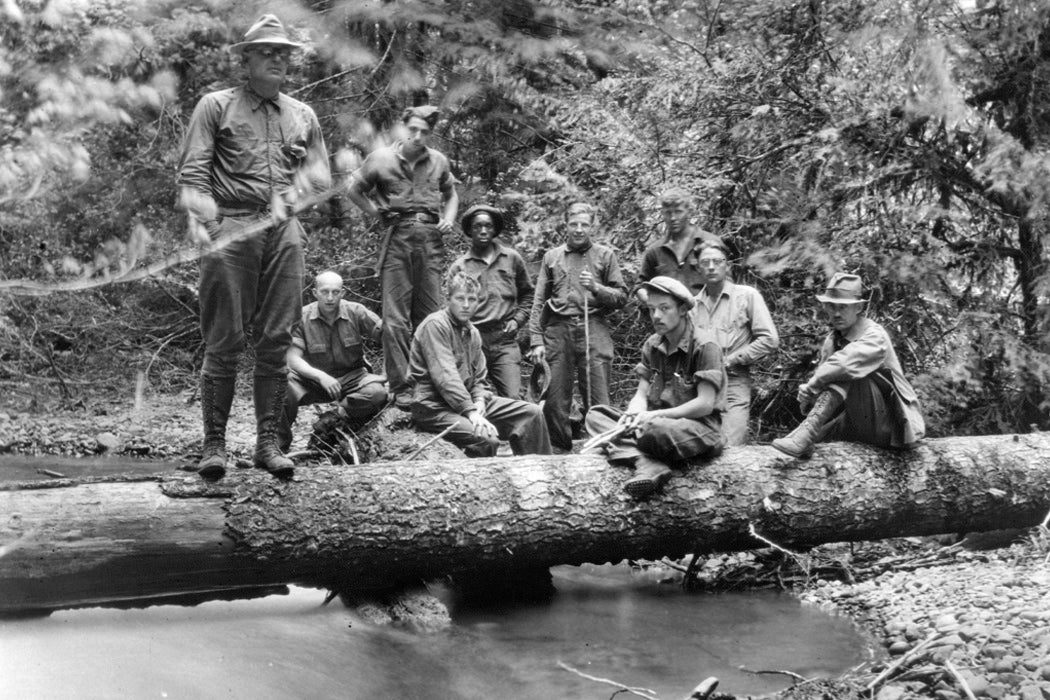The Green New Deal concept championed by Democratic Representative Alexandria Ocasio-Cortez aims to address looming environmental catastrophe while creating good-paying jobs. Some critics argue that these two goals should be kept separate. But, as historian Neil M. Maher writes, there’s a strong precedent for the two goals going hand-in-hand. Take, for example, the Civilian Conservation Corps, which was part of the original New Deal.
Between 1933 and 1942, more than three million young men joined the Civilian Conservation Corps. They planted over two billion trees, constructed 13,000 miles of hiking trails, developed 800 new state parks, and slowed soil erosion on forty million acres of farmland.
Maher writes that President Franklin Roosevelt pitched the Corps mostly as a jobs program. “The overwhelming majority of unemployed Americans, who are now walking the streets and receiving private or public relief, would infinitely prefer to work,” he told Congress.
The program was open only to unemployed, single men between ages eighteen and twenty-five (with the vast majority of the jobs going to white men). Because most workers in the program had no prior experience in conservation work—and often little to no work experience at all—the Corps took on projects that only required unskilled labor.
Maher writes that the Corps was a popular program, thanks to its impact on the young men who joined. Members described beginning their stints in bad physical and emotional condition, due largely to the deprivations of the Depression and their unwholesome lifestyles as young, unemployed men in urban settings. Hard work in the outdoors—along with plentiful food provided by the Corps—transformed their bodies. They grew taller than they otherwise would have and gained an average of eleven to fifteen pounds.
Some linked their transformations with time spent in nature. “Not an artificial mechanical world like that of the modern city, but a world alive with beauty more lovely than I had ever known,” enrollee Paul Stone wrote. “It was in this country that my health was renewed.”
Maher writes that the popularity of the Corps rallied support for the Roosevelt administration’s expansive agenda, and also for the idea of conservation. Prior to the 1930s, most U.S. conservationists were highly educated and often wealthy, promoting their ideas through an elite network rather than mass politics.
Once a Week
Aside from hard labor, work in the Corps offered hands-on education in conservation. Many participants became deeply concerned about the preservation of nature, helping to create a new working-class constituency for environmental politics. After World War II, former Corps enrollees went on to study forestry or conservation and find jobs in the field. The Corps was also part of a broader New Deal effort to educate the public about conservation, which involved collaboration with media outlets, educational institutions, and farmers.
Ultimately, Maher writes, the concrete financial, emotional, and physical benefits of jobs in the Corps helped create a broad, working-class constituency for a green agenda in the twentieth century.







